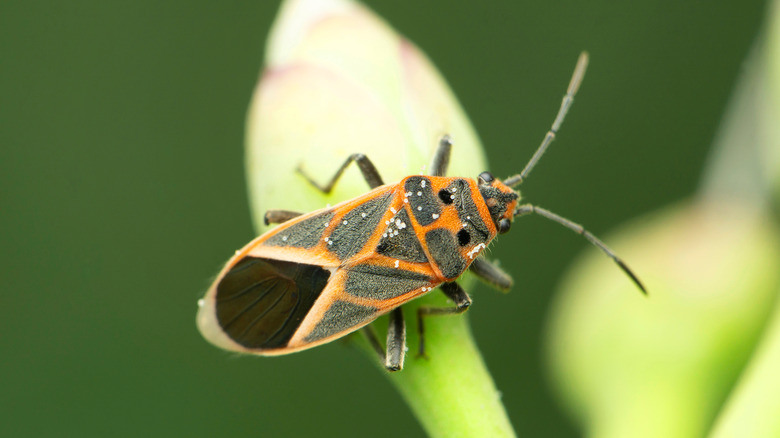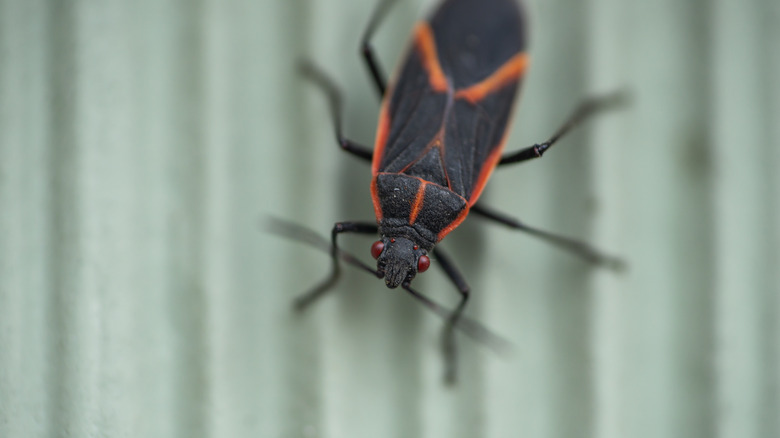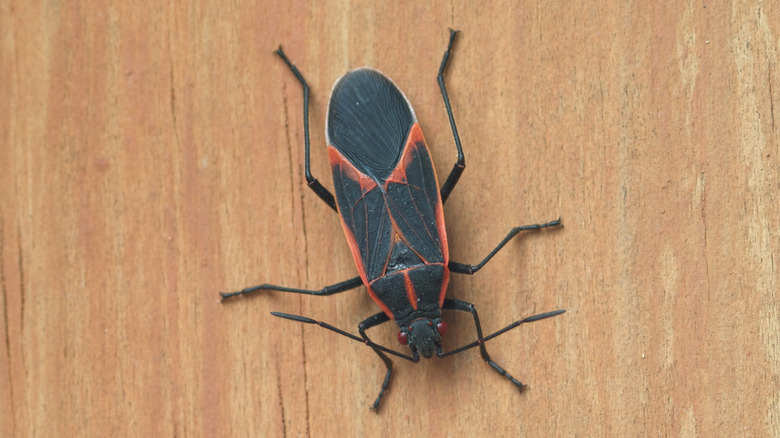An Entomology Expert's Tips On How To Prevent Boxelder Bugs From Getting Into Your Home
There are a series of unpleasant bugs we see make their way into our homes every year, boxelder bugs are among one of the most common. In an exclusive interview with House Digest, Emma Grace Crumbley, Entomologist at Mosquito Squad, helps us understand how to identify boxelder bugs, if we should be worried about them damaging our homes, and how to prevent these pests both short-term and long-term. She explains that they received their name from being commonly found on boxelder trees and are in the Hemiptera order of insects alongside stink bugs, cicadas, and aphids. "These true bugs are strictly herbivorous, and their piercing/sucking mouth parts allow them to attack and eat boxelder tree seeds and leaves as well as some fruiting trees," Crumbley said. "Boxelder bugs are easy to spot, as both adults and nymphs are fairly large, measuring about 1/16 to 1/4 inch for nymphs and 1/2 inch for adults."
Crumbley notes that nymphs can be identified by their bright red coloration and little black wings, while adults are mainly black with red wings and lines on their pronotum, the section of the bug's head that shields its thorax. You can expect to see boxelder's most active outdoors in spring and summer, but more common indoors once colder weather starts to set in. They begin traveling inside for warmth, sometimes traveling as far as two miles to find suitable shelter.
Will boxelder bugs damage your home?
In the interview, Emma Grace Crumbley told us that despite boxelder bugs being found on trees, they don't feed on wood and won't cause damage to our homes. However, they can stain surfaces with their feces. "Like other nuisance insects, boxelder bugs often invade homes in groups in an attempt to seek shelter from cold weather," she said. "During summer months, boxelder bugs may be found on the exterior walls of your home or on the sidewalk areas where they can escape the sun." She also notes that if your yard has an excess of places for these insects to rest and hide, you're less likely to find them trying to enter your house.
"During winter months, however, boxelder bugs may try to find their way into your warm home to escape the cold weather," she explains. "This is when most boxelder bug issues occur." When they venture inside, you will probably find them near windows and wandering along your house plants in search of water. Although these insects are unpleasant, you at least won't have to worry about them reproducing inside, and their life span is only a few days to possibly a week.
Short-term and long-term solutions
When removing boxelders from your home, you should take some careful measures. "Boxelder bugs are large and will leave a decent size mark if you try to squish them, and when threatened, boxelder bugs emit a strong (and stinky) odor to deter predators," Crumbley tells House Digest. "Using a vacuum cleaner to suck up boxelder bugs is a quick and clean method to remove large numbers of them from your home. Be sure to dispose of the dryer bag and clean your vacuum out away from the home to prevent re-infestation." She also says that insect repellants help, but to truly eliminate these pests, you need to take long-term preventive measures.
Crumbley suggests first sealing off all possible entry points into your home. Carefully checking your house's foundation for any openings helps deter all pests, not just boxelder bugs. "Removing boxelder trees or other host plants is less effective at preventing these insects from being present in your lawn or home," she states. With boxelder bugs able to fly and travel a few miles simultaneously, it makes little difference. "As an entomologist, I always recommend doing whatever you can do to control for insects in and around your home," Crumbley said. "Small changes to your house and lawn can make a huge difference in the amount of pests you see. However, if you've tried every tip or trick and nothing seems to help your boxelder bug problem, then it's time to call in the pros."


